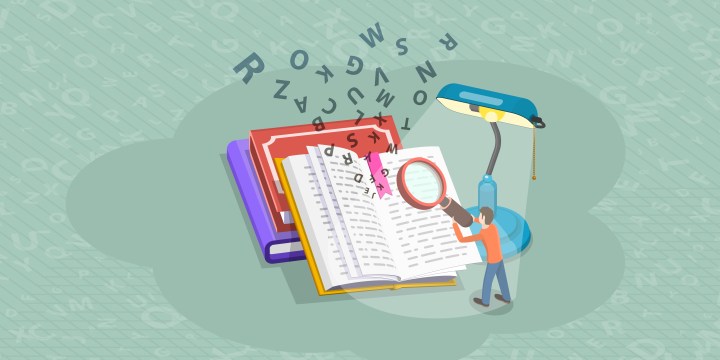
Your guide to understanding unemployment insurance terms

The unemployment insurance system has never been easy to navigate, but these days, with over 32 million people in the United States claiming some kind of unemployment benefit, it seems more complicated than ever. There is regular state unemployment insurance, there is the extra money paid from the federal government as part of the Coronavirus Aid, Relief and Economic Security Act, and then there are the new categories of people, like gig workers, who qualify for aid. Below we explain the most common terms and acronyms to help you make sense of the system.
State Unemployment Insurance (UI)
Unemployment insurance offered in every state that pays a weekly benefit to workers who have become unemployed through no fault of their own. Each state runs its own system and determines eligibility, duration, maximum and minimum benefit. Benefit amount is determined by a worker’s previous wages and duration of employment. To receive benefits, claimants have to show they’re continuing to look for work. Most state programs limit recipients to 26 weeks of benefits.
State UI is funded by a payroll tax on employers and is administered in partnership with the U.S. Department of Labor. The federal government typically pays for expansions and extensions of unemployment benefits during recessions and natural disasters, like during the current COVID-19 pandemic.
Many people who are unemployed or underemployed and actively searching for work don’t qualify for state UI benefits. This includes new entrants and reentrants to the workforce, long-term unemployed people who have exhausted their UI benefits and some part-time and low-income workers.
Federal Pandemic Unemployment Compensation (FPUC)
Federally funded program under the CARES Act that pays a $600 per week supplement to all unemployed workers who are receiving state or federal jobless benefits. The program expires July 31. After that, without further action by Congress to extend or modify the program, weekly benefit checks will revert to the amount set under state UI rules, minus the $600 per week FPUC supplement.
Pandemic Unemployment Assistance (PUA)
Federally funded program under the CARES Act that expands eligibility for jobless benefits to unemployed workers who ordinarily would not qualify for state UI benefits and are unable or unavailable to work due to COVID-19. Program runs through December.
Eligible workers include:
- Gig workers, self-employed workers, sole proprietors, freelancers, independent contractors;
- Temporary or part-time workers who didn’t work long enough, or earn enough, in their previous job(s) to qualify for regular state UI.
Reasons workers can qualify for PUA:
- They’ve lost part or all of their pre-pandemic work due to COVID-19;
- They had to quit a job, can’t return to a job, couldn’t start a job or can’t seek a new job due to COVID-19;
- They can’t work because they’re caring for a child whose school or child care is closed due to COVID-19, they’ve been diagnosed with COVID-19 or are caring for someone diagnosed with COVID-19, or they’re under COVID-19 quarantine.
PUA recipients get the $600 per week Federal Pandemic Unemployment Compensation payment, plus a state unemployment insurance payment. This payment may be based on the applicant’s previous income from regular or self-employment. Those who can’t verify previous self-employment income are paid 50% of the state’s average weekly benefit.
Workers apply for PUA through their state’s unemployment insurance system, and applicants must be deemed ineligible for state unemployment insurance to qualify for PUA. Recipients can be on PUA for up to 39 weeks or until the program’s scheduled expiration on Dec. 31, whichever comes first.
Update Nov. 6, 2020: In some states with high unemployment, recipients can receive up to 46 weeks of PUA benefits.
Pandemic Emergency Unemployment Compensation (PEUC)
Federally funded program under the CARES Act that provides 13 additional weeks of state unemployment insurance once a recipient has exhausted their state benefits (typically after 26 weeks).
Benefit amount
Each state sets a minimum, maximum and average weekly unemployment insurance benefit. An individual’s weekly benefit is based on how long they have been working and their earnings from their previous employment. The average weekly benefit nationwide is $342.25 as of May.
Benefit eligibility
Eligibility for state unemployment insurance benefits varies widely from state to state. To qualify in most cases, a worker has to have lost their job through no fault of their own — for instance, through a furlough or layoff, reduction in workforce, business closure or relocation, change in business conditions or job requirements, etc.
Being fired for cause typically disqualifies an applicant, as does quitting a job voluntarily (including, in most states, to follow a spouse to a new job or military posting, or to care for a family member). A person who has recently entered or reentered the workforce — for instance, following school graduation — will typically not qualify for unemployment insurance. In some states, part-time and low-income workers are ineligible for unemployment insurance, because prior to becoming unemployed, they didn’t work enough hours or earn enough income to qualify. Undocumented workers are not eligible for regular state unemployment insurance or federal Pandemic Unemployment Assistance.
There’s a lot happening in the world. Through it all, Marketplace is here for you.
You rely on Marketplace to break down the world’s events and tell you how it affects you in a fact-based, approachable way. We rely on your financial support to keep making that possible.
Your donation today powers the independent journalism that you rely on. For just $5/month, you can help sustain Marketplace so we can keep reporting on the things that matter to you.


















